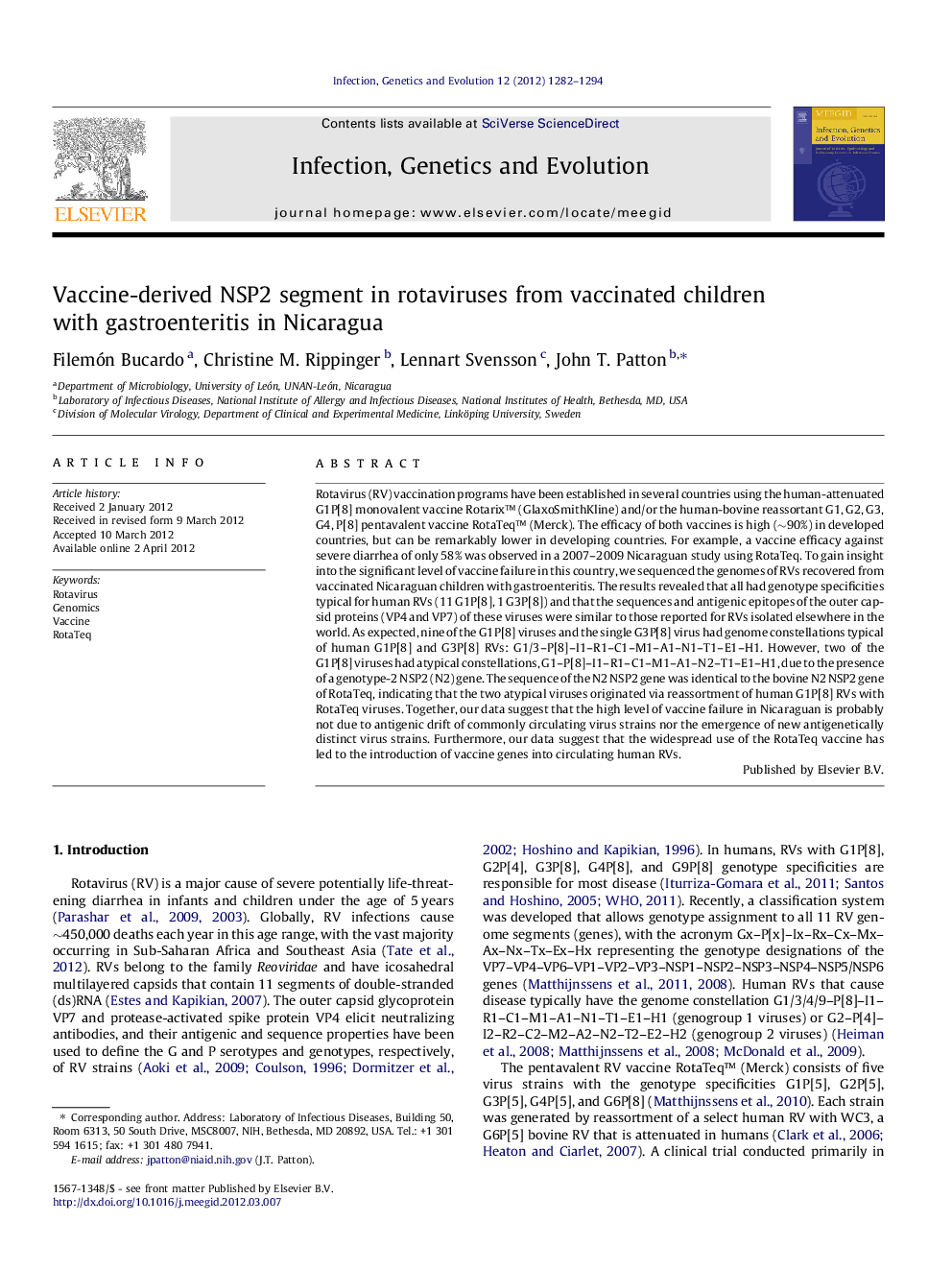| کد مقاله | کد نشریه | سال انتشار | مقاله انگلیسی | نسخه تمام متن |
|---|---|---|---|---|
| 5911397 | 1161363 | 2012 | 13 صفحه PDF | دانلود رایگان |

Rotavirus (RV) vaccination programs have been established in several countries using the human-attenuated G1P[8] monovalent vaccine Rotarix⢠(GlaxoSmithKline) and/or the human-bovine reassortant G1, G2, G3, G4, P[8] pentavalent vaccine RotaTeq⢠(Merck). The efficacy of both vaccines is high (â¼90%) in developed countries, but can be remarkably lower in developing countries. For example, a vaccine efficacy against severe diarrhea of only 58% was observed in a 2007-2009 Nicaraguan study using RotaTeq. To gain insight into the significant level of vaccine failure in this country, we sequenced the genomes of RVs recovered from vaccinated Nicaraguan children with gastroenteritis. The results revealed that all had genotype specificities typical for human RVs (11 G1P[8], 1 G3P[8]) and that the sequences and antigenic epitopes of the outer capsid proteins (VP4 and VP7) of these viruses were similar to those reported for RVs isolated elsewhere in the world. As expected, nine of the G1P[8] viruses and the single G3P[8] virus had genome constellations typical of human G1P[8] and G3P[8] RVs: G1/3-P[8]-I1-R1-C1-M1-A1-N1-T1-E1-H1. However, two of the G1P[8] viruses had atypical constellations, G1-P[8]-I1-R1-C1-M1-A1-N2-T1-E1-H1, due to the presence of a genotype-2 NSP2 (N2) gene. The sequence of the N2 NSP2 gene was identical to the bovine N2 NSP2 gene of RotaTeq, indicating that the two atypical viruses originated via reassortment of human G1P[8] RVs with RotaTeq viruses. Together, our data suggest that the high level of vaccine failure in Nicaraguan is probably not due to antigenic drift of commonly circulating virus strains nor the emergence of new antigenetically distinct virus strains. Furthermore, our data suggest that the widespread use of the RotaTeq vaccine has led to the introduction of vaccine genes into circulating human RVs.
⺠Rotaviruses in stools of RotaTeq-vaccinated children with diarrheal disease were sequenced. ⺠Most vaccinated children were infected with globally common G1P[8] rotaviruses. ⺠Two G1P[8] isolates contained RotaTeq-derived NSP2 (N2) genome segments. ⺠Human-vaccine reassortant viruses were produced in nature that are viable and cause disease.
Journal: Infection, Genetics and Evolution - Volume 12, Issue 6, August 2012, Pages 1282-1294